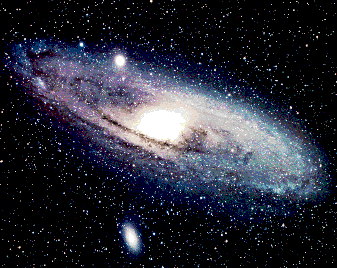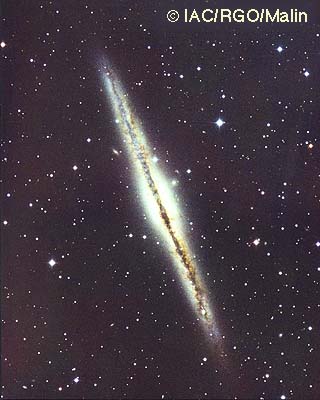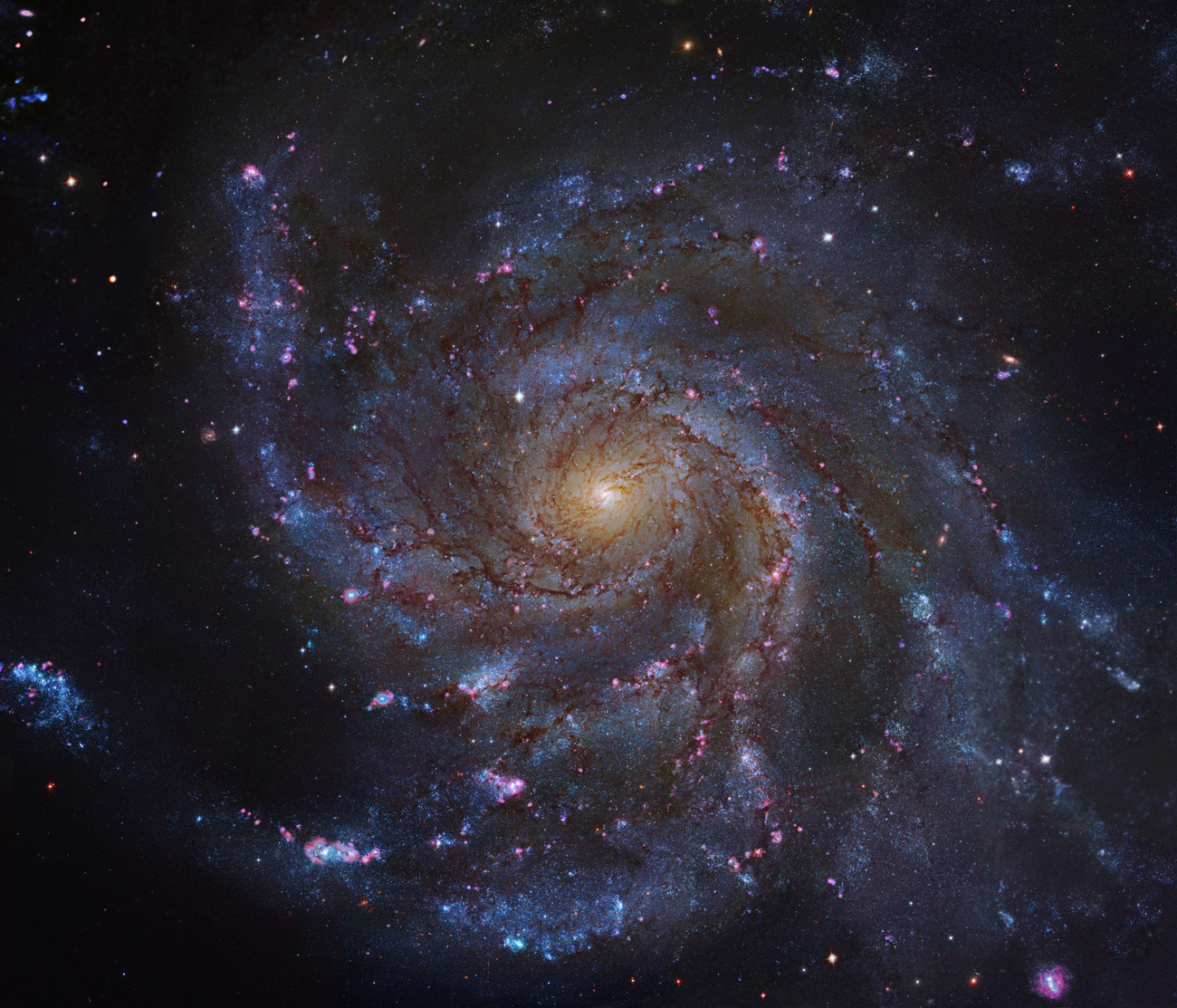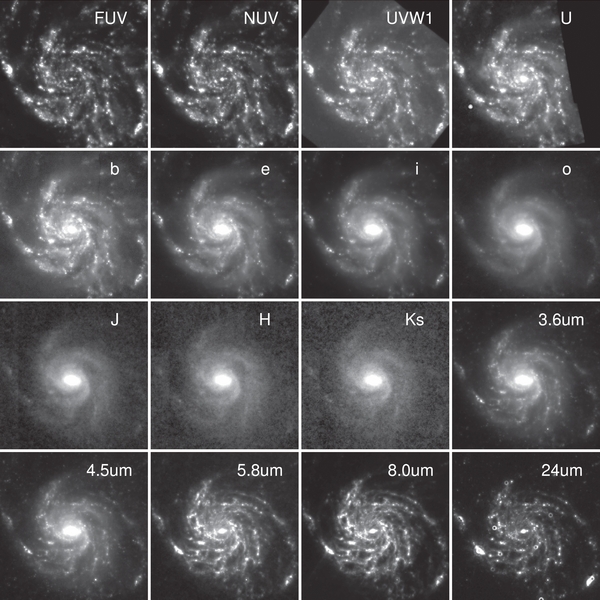The Disk of the Milky Way
| The dominant stellar
component of the Galaxy is the disk, a flattened
(rotating) disk of stars like what we see in this image of
the nearby Andromeda galaxy:
The density of stars drops off
exponentially as you move outwards in the Galaxy, or as
you move up or down off of the Galactic plane:

where z is the height above (or below)
the plane, and R is the radius in the disk. z0 and h are
referred to as the scale height and scale length of the
disk, respectively, and are the distance over which the
density drops to 1/e ~ 0.37 of its maximum.
|
 |
The scale length of the disk is something like h
~ 3 kpc, and the Sun orbits the Galaxy at a distance of about 8
kpc, so we are in the outer parts of the Galaxy.
 |
The disk is thin, as can be seen in this
picture of the nearby edge-on galaxy NGC 891.
The disk actually is made up of several
different components, or stellar populations, and the
thickness is different for each one. There is
- the young
thin disk of gas and young stars (z0
~ 50 pc)
- the old
thin disk of older stars like the sun
(z0 ~ 300-400 pc)
- the thick
disk of older, metal-poor stars (z0
~ 1- 1.5 kpc)
|
The Milky Way is a spiral galaxy, hard to easily trace spiral
structure from the inside, but let's look at a nearby spiral
galaxy, M101 (courtesy Robert Gendler):

If we look at M101 in different wavelengths of light, we see
different components of the galaxy (Lin et al ApJ 2013):
 |
Ultraviolet: Hot young stars
Optical: Normal stars
Near infrared: Old stars
Mid infrared: Warm dust heated by young stars
|
Our Milky Way shows similar spiral structure
![]()



